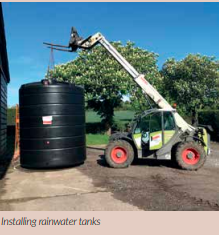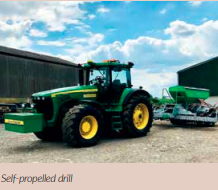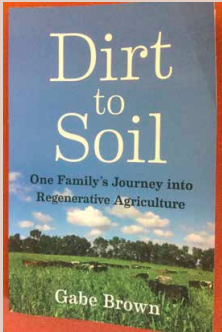“Everyone copies and no-one thinks”

As I sit here in a Spain an hour north of Malaga in the mountains surrounded by Olive groves it’s a good time to think and reflect. I must admit I’m really not that good at doing holidays! Fortunately I have a wonderful wife who makes it a priority and to be honest it’s a good time to get away. At home the flag leaf sprays have been completed, all fertiliser applied and machines given a pre-holiday/pre busy-season wash & polish. We’ve also installed three 20 000 litre rainwater harvesting tanks to gather much needed water for spraying. As I take the occasional glance at social media, I see serious weather issues affecting the mid-west of America. Parts of Canada have had difficulties this spring and I’m sure there are other areas facing weather challenges too. This will no doubt have knock-on effects when it comes to our domestic commodity prices. With nothing sold forward the potential uplift in prices needs to be watched carefully!
The title of this article is a phrase I picked up from a farmer I met in Paraguay whilst travelling on my Nuffield Scholarship. “Everyone copies and no-one thinks” It’s a phrase I come back to often especially when I’m in danger of being affected by the latest trend sweeping the “twitter-sphere”!! There are two particular areas where a lot of “thinking” and a lot less “following” are required. These for me are the whole area of black grass and machinery inventory/requirements. If there’s one thing I seem to have become good at doing this year, it’s establishing a lovely crop of black grass! No matter what chemistry we have thrown at it we still seem to be fighting a battle.

My reading material poolside this week has been “Dirt to Soil” by Gabe Brown. This book, for those of you who have yet to read it, challenges almost every farming pre-conception you have. Even over this week I have thought differently and made changes to my thought pattern regarding how we tackle soils and weed seeds. Consequently, we will now be planting a 12-way cover crop behind first wheat before spring barley to build soil health. Time will tell whether this is the right thing to do! My plan on a 100ha block of free draining medium soil will be to drill on the green and spray off post drilling. As for the issue of machinery, again Gabe Brown challenges our thinking. Having had the privilege of visiting “Browns Ranch” in North Dakota with Jake Freestone on our Nuffield travels, I can confirm that “shiny metal syndrome” is not an issue Gabe and Paul Brown struggle with! Certainly, a lot to be challenged by there!
I have recently thought that 3 tractors and a self-propelled sprayer on our acreage was inefficient and overkill. Looking at what other farmers covering more acres were doing I ought to be running two tractors and a trailed sprayer I thought. I really like the idea of a wider boom that follows ground contours better and a bigger tank. More acres covered per load and more timely applications particularly as we apply liquid fertiliser too (4 splits this spring) It’s a thought process that’s ongoing and really needs a few more acres to justify. Having said that my three tractors are all over 9 years old, in immaculate condition and have barely 10000hrs between them. They are all bought and paid for and allow capacity during harvest and haymaking plus the luxury of a “selfpropelled drill” which for planting cover crops this year may be a Godsend. My Dad is a first-generation farmer and has a great saying “we make money because we don’t spend money” Knowing when to spend and when to cut out inputs or do things a different way are part of the fun of farming.
But also knowing when to jump at an opportunity is a skill I need to improve upon!

The issue of cover crops has been nagging at me for the last year or two. When we embraced no-till 7 years ago we had some really successful catch crops and cover crops, but I think I got complacent and relied on volunteer regrowth to give green cover. Again, reading Gabe Browns book has reinforced the importance of diversity above and below ground. I have a hunch that combining this with a varied mix of spring and autumn sown cash crops will have a positive impact on our black grass control. A great quote from Gabes book is “without cover crops you’re going to spill the sun and waste an opportunity to boost the healing process”

As always, the future plans change! People ask me what my crop rotation is and I normally just shrug my shoulders as it changes on a weekly basis! We think we’ve got somewhere near where we want to be with a five-way rotation that includes 2 wheats, Oilseed Rape, Winter or Spring Barley and Winter or Spring Beans.

That gives opportunity for both catch crops and cover crops, a good workload spread and hopefully opportunity to build soil health. We’re moving into the show season and I’ll be attending Groundswell and Cereals this year. Looking forward to hearing some excellent presentations and seeing what’s on offer. Lots to think about, but who to follow?!
